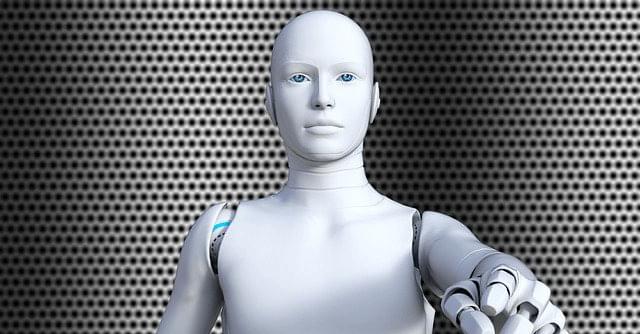A team of researchers at the University of Illinois Chicago has discovered a way to restore memory loss from Alzheimer’s disease in mice by boosting the production of neurons, the basic cells of the brain.



O.o!!!
According to recent research, the protein CHIP can control the insulin receptor more effectively while acting alone than when in a paired state. In cellular stress situations, CHIP often appears as a homodimer – an association of two identical proteins – and mainly functions to destroy misfolded and defective proteins. CHIP thus cleanses the cell. In order to do this, CHIP works with helper proteins to bind a chain of the small protein ubiquitin to misfolded proteins.
As a result, the cell detects and gets rid of defective proteins. Furthermore, CHIP controls insulin receptor signal transduction. CHIP binds to the receptor and degrades it, preventing the activation of life-extending gene products.
Researchers from the University of Cologne have now shown via tests using human cells and the nematode Caenorhabditis elegans that CHIP can also label itself with ubiquitin, preventing the formation of its dimer. The CHIP monomer regulates insulin signaling more effectively than the CHIP dimer. The research was conducted by the University of Cologne’s Cluster of Excellence for Cellular Stress Responses in Aging-Associated Diseases (CECAD) and was recently published in the journal Molecular Cell.

Researched and Written by Leila Battison.
Narrated and Edited by David Kelly.
Script Edited by Pete Kelly.
Art by Khail Kupsky.
Thumbnail Art by Ettore Mazza.
If you like our videos, check out Leila’s youtube channel:
https://www.youtube.com/channel/UCXIk7euOGq6jkptjTzEz5kQ
References for the video:
https://archive.org/details/molecularorigins0000brac/page/2/mode/2up https://www.springer.com/cda/content/document/cda_downloaddo…p173822459 https://www.wired.com/2014/06/fantastically-wrong-how-to-gro…-are-wrong https://penelope.uchicago.edu/Thayer/E/Journals/TAPA/51/Spontaneous_Generation*.html#note52 https://www.ncbi.nlm.nih.gov/pmc/articles/PMC2926753/
Thanks to:

Using gene modification techniques, a team of researchers have come up with a new treatment for balding, Wired reports — a condition experienced to varying degrees by two-thirds of American men by age 35.
The team, associated with the University of California, Irvine and a biotech company called Amplifica, believes they’ve identified the signaling pathway that drive hair growth to find new ways to stop stem cells from giving up on producing hair follicles.
Experiments with mice, as detailed in a new paper published in the journal Developmental Cell last month, have been promising. The mice were genetically modified to have the hair growth signaling pathway turned on permanently.

Artificial Intelligence (AI) can perform preventive healthcare activities such as health screening, routine check-up and vaccination with expert-level accuracy that can turn out to be cost-effective in the long run. Yet, a new research found that individuals show less trust in preventive care interventions suggested by AI than when the same interventions are prompted by human health experts.
The researchers at Nanyang Technological University (NTU) Singapore studied 15,000 users of a health mobile application and found that emphasising the involvement of a human health expert in an AI-suggested intervention could improve its acceptance and effectiveness.
These findings suggest that the human element remains important even as the healthcare sector increasingly adopts AI to screen, diagnose and treat patients more efficiently. The findings could also contribute to the design of more effective AI-prompted preventive care interventions, said the researchers.
Join us on Patreon!
https://www.patreon.com/MichaelLustgartenPhD
Quantify Discount Link (At-Home Blood Testing)
https://getquantify.io/mlustgarten.
TruDiagnostic Discount Link (Epigenetic Testing)
CONQUERAGING!
https://bit.ly/3Rken0n.
Bristle Discount Link (Oral microbiome quantification):
ConquerAging15
https://www.bmq30trk.com/4FL3LK/GTSC3/
Cronometer Discount Link (Daily diet tracking):
https://shareasale.com/r.cfm?b=1390137&u=3266601&m=61121&urllink=&afftrack=
Support the channel with Buy Me A Coffee!

SINGAPORE — A new longevity clinic where the doctor will diagnose a healthy person’s biological age and then provide a customised plan to slow ageing is being set up at Alexandra Hospital and is expected to open by early next year.
It will be the first publicly funded outpatient clinic in longevity medicine in Singapore and possibly in the world, Professor Andrea Maier, the co-director of the National University Health System (NUHS) Centre for Healthy Longevity told The Straits Times at the sidelines of the centre’s opening on Wednesday.
The clinic will be manned by internal medicine specialists like Prof Maier, who is also the founding president of the International Longevity Medicine Society that was set up last month.

Were you unable to attend Transform 2022? Check out all of the summit sessions in our on-demand library now! Watch here.
Deepfakes aren’t new, but this AI-powered technology has emerged as a pervasive threat in spreading misinformation and increasing identity fraud. The pandemic made matters worse by creating the ideal conditions for bad actors to take advantage of organizations’ and consumers’ blindspots, further exacerbating fraud and identity theft. Fraud stemming from deepfakes spiked during the pandemic, and poses significant challenges for financial institutions and fintechs that need to accurately authenticate and verify identities.
As cybercriminals continue to use tools like deepfakes to fool identity verification solutions and gain unauthorized access to digital assets and online accounts, it’s essential for organizations to automate the identity verification process to better detect and combat fraud.

Researchers have solved the century-old mystery of a supergene that causes efficient cross-pollination in flowers. The results reveal that sequence length variation at the DNA
DNA, or deoxyribonucleic acid, is a molecule composed of two long strands of nucleotides that coil around each other to form a double helix. It is the hereditary material in humans and almost all other organisms that carries genetic instructions for development, functioning, growth, and reproduction. Nearly every cell in a person’s body has the same DNA. Most DNA is located in the cell nucleus (where it is called nuclear DNA), but a small amount of DNA can also be found in the mitochondria (where it is called mitochondrial DNA or mtDNA).